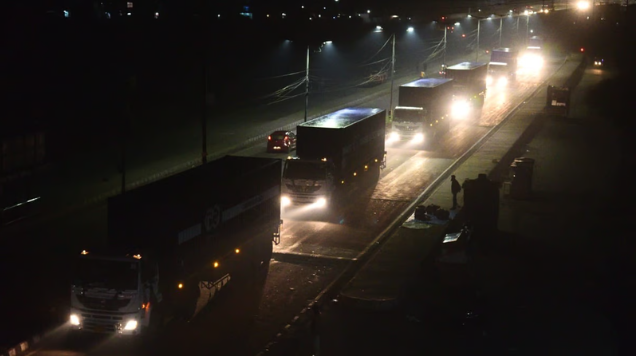– Pervez Bari
Bhopal: Following decades of advocacy by survivors of 1984 Bhopal gas tragedy – one of the world’s worst industrial disasters – 377 tonnes of toxic waste from the abandoned Union Carbide Corporation (UCC) pesticide factory have finally been removed for incineration. The disaster, caused by the release of methyl isocyanate (MIC) gas on December 2-3, 1984, claimed at least 5,479 lives and left countless others with lasting health issues. The hazardous waste has been a lingering environmental and health hazard for over 40 years.
Trucks began transferring the toxic waste to a disposal site in Pithampur, about 250 kilometres from Bhopal. To ensure safe transport, authorities established a “green corridor,” with trucks departing Bhopal at 9 p.m. and expected to arrive within seven hours at an average speed of 50 km/h. A 200-meter radius around the loading site was sealed off, with over 1,000 police officers deployed for security. Approximately 100 personnel in protective gear worked in shifts to safely pack and load the waste into 12 sealed, leak-proof containers, supported by a convoy of 25 vehicles.
The Madhya Pradesh High Court, responding to a writ petition by Zehreeli Gas Kand Sangharsh Morcha in 2004, criticised government delays and set a four-week deadline for the waste’s relocation. It warned of contempt proceedings against officials for non-compliance. In response, the Union government sanctioned ₹126 crore for the clean-up.
The hazardous materials, including remnants of Sevin pesticide, contaminated soil, reactor waste, and pesticide residues, were prepared for incineration at Ramky Enviro Engineers Limited (REEL) in Pithampur. A specialised incineration process, monitored by the Central and State Pollution Control Boards, will ensure the ash is tested, filtered through a four-layer system, and encapsulated before burial to prevent environmental contamination.
Despite safety assurances, protests erupted in Pithampur against the incineration of the toxic waste. Led by local leaders, including BJP councillor Ashok Patel and Congress councillor Manisha Lalu Sharma, protesters expressed fears of environmental and health risks. They demanded alternative disposal sites and vowed to block the incineration.
In response, officials from the Central Pollution Control Board assured the community of rigorous safety measures, including a leak-proof waste handling shed. The Pithampur facility, Madhya Pradesh’s only modern incineration unit, previously handled a 2015 trial incineration of 10 tonnes of similar waste under scientific supervision, with results submitted to the court.
The incineration process is expected to begin within three months, though potential delays could extend this timeline to nine months. Continuous monitoring will ensure compliance with environmental standards, with plans to prevent soil and water contamination. The clean-up marks a significant step in addressing the long-standing legacy of the Bhopal gas tragedy.




